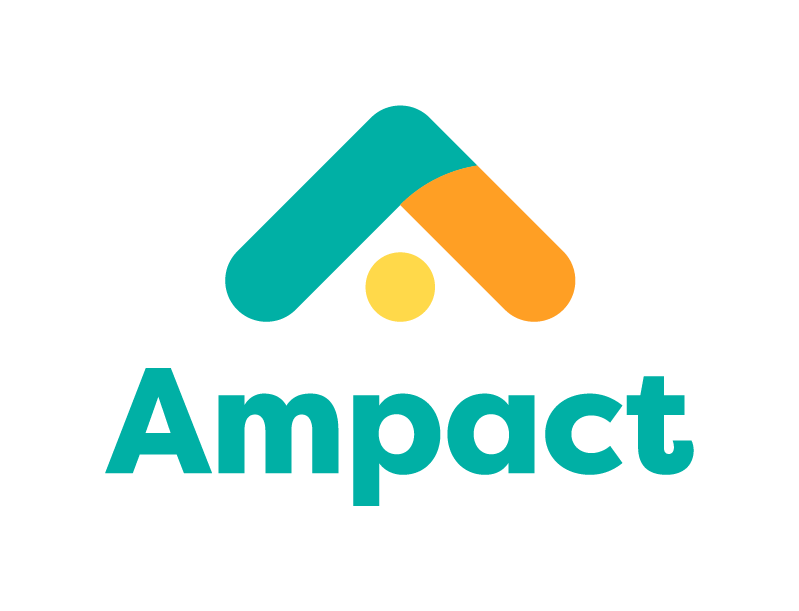Turtle Tunnels and the Importance of Climate Communication
Climate Impact Corps member Hannah at the Washington County Turtle Tunnel
Why did the turtle cross the road?
The Washington County Turtle Tunnel looking North
Actually, she doesn’t have to! Thanks to a collaboration between half a dozen local and state partners, there’s a tunnel beneath Route 4 allowing turtles and other wildlife safe passage. However, that doesn’t exactly answer the question: safely or not, why do turtles need to cross roads and why does it matter? As part of her Climate Impact Corps service, Hannah set out to teach the public exactly that.
Finding an Avenue for Her Passions
Hannah is in her first year serving in Climate Impact Corps in Oakdale, Minnesota, where she collaborates with different local environmental organizations and supports the work they do. She joined AmeriCorps after studying graphic communications, working a few years in the private sector, and then completing a master’s in sustainable management. She didn’t know much about the Climate Impact Corps before applying, but it seemed like a great way to follow her interests and meet like-minded people.
“I was passionate about sustainability all my life,” she says. “This seemed like a great opportunity to get into it and build some experience.”
Climate Impact Corps members are responsible for engaging with local communities around issues of sustainability, collecting useful data, and completing four to five major projects during their year of service. For her projects, Hannah was drawn to initiatives that could make a difference by utilizing her research, design, and communication skills.
Let the Rain Fall
One such project focused on the management of stormwater in urban and suburban neighborhoods. Proper infrastructure for heavy rain can mean preventing pollution, flooding, and erosion, all of which can cause extensive problems for local ecosystems. Minnesota has guidelines on solutions to these problems, but even well-organized neighborhoods can have trouble maintaining the stormwater ponds and rain gardens that keep flooding at bay. Hannah partnered with a research org and reached out to homeowners' associations (HOA) across the state to find out exactly how they needed support.
“We surveyed HOA board members, property managers, and some residents, to gauge their understanding of this infrastructure, as well as what they need in terms of education to maintain these practices,” she says. The next step will be finding the best way to fill those gaps in knowledge. “I've been planning a conference for HOA leaders as well as developing fact sheets to help educate them.”
Often the hardest part of implementing environmental policy isn’t the science itself but connecting to the general public. Hannah’s background in graphic communication has proved invaluable as she has sought ways of getting community members informed and engaged about making their homes more resilient to climate change.
“I'm creating educational materials, so I’m taking a lot of research and rephrasing things in understandable ways for a less-technical audience,” she says. “The graphic design aspect of it is so important too: I'm putting together photos and text, creating a visually cohesive set of fact sheets.”
Conveying Turtles and Conveying Messages
Perhaps Hannah’s most memorable project has been working with the turtle tunnel near Big Marine Park Reserve in Washington County, Minnesota. The tunnel – which has been open for ten years – gives wildlife safe passage and provides great opportunities for research, education and community outreach. Hannah dug into habitat preservation, examining the ways that a thriving ecosystem makes communities better able to adapt to a changing climate.
“Protecting biodiversity is one of the major sustainability topics that I'm interested in,” Hannah says. “I did some pretty in-depth research about declining biodiversity and it turned into this multifaceted project.”
Hannah used her knowledge of graphic communications to turn that research into a website where the public can learn more about related topics such as wildlife crossings, the need for the Washington County turtle tunnel specifically, how crossings protect animals and ecosystems, and why they’re important to the earth's climate.
Big Marine Park Reserve with the tunnel fencing in the foreground
Minnesota Route 4 runs directly between Big Marine Park Reserve and a stretch of wetlands just to the south. Humans can distinguish where the preserve ends and regular wetland begins, but turtles can’t. Frequent crossings by animals of all kinds and heavy traffic meant a lot of mortalities. While experts and many locals supported the creation of the tunnel, some residents remained skeptical that the expense would be worth it or that the corridor would be used at all.
Celebrating Success and Connecting with the Public
Ten years on, the tunnel has proven to be a major success in both connecting habitats and reducing road mortalities. Hannah’s website has been a dynamic way to keep the community informed and engaged. The key? She pairs the written information with dozens of photos of the tunnel in use. A wildlife camera attached to the south side of the tunnel has snapped pictures of everything from frogs to finches to ermines, salamanders, possums and, of course, turtles. There are even photos of a tortoise and a hare, but no indication of which one made it across first. The final page on the site looks forward to future opportunities for action.
Animals photographed by the wildlife camera: turtles and rabbits and ducks, oh my!
“One outcome of my research is asking ‘if we are going to build future turtle tunnels or other crossings, what should these look like?’” she says, underscoring the importance of preserving the state’s wildlife. “Biodiversity is one of our main mechanisms to help combat climate change. It promotes resiliency, especially in having a diversity of species that can adapt and change.”
Making an Impact Publicly and Personally
Hannah has a lot to be proud of from her time in AmeriCorps. However, serving in Climate Impact Corps has meant much more than just contributing to environmental projects. Hannah’s service has allowed her to use her skills and her knowledge in honor of a cause that she cares about deeply. It’s something she wishes she had been able to do earlier in her career and not an experience she will ever forget.
“I've just loved creating communications materials on all these different environmental issues,” she says. “I'm excited and grateful for the opportunity. I'm passionate about all the stuff I'm doing. That's exciting to me because I haven't felt that before this position.”
If you’re passionate about the environment, take Hannah’s advice: “I would definitely encourage people to consider the program. It’s a great experience.” Climate Impact Corps is accepting applications for full and part time service now through the end of July. You can check out Hannah’s other website on Minnesota biodiversity here.





